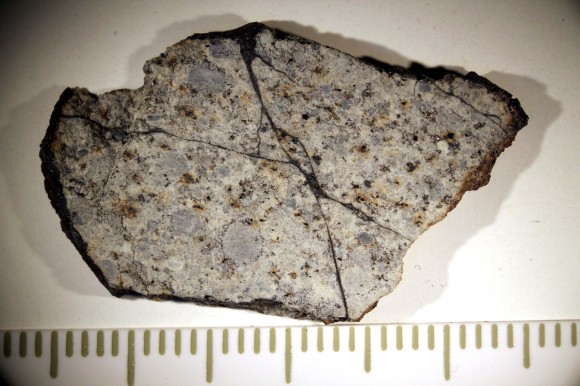

| Visitors Now: | |
| Total Visits: | |
| Total Stories: |

| Story Views | |
| Now: | |
| Last Hour: | |
| Last 24 Hours: | |
| Total: | |
Russian Fireball Inspires Journey into the World of Meteorites

A 30mm (1.2 inch) long polished slice of one of the Russian meteorite samples. You can see several round grains called chondrules and narrow shock veins lined with melted minerals. The veins likely formed from the shock of the impact that ultimately sent it the stone to Earth. Click to enlarge. Credit: Laboratory of Meteoritics, Vernadsky Institute in Moscow
A little more than week ago a 7,000 ton, 50-foot (15-meter) wide meteoroid made an unexpected visit over Russia to become the biggest space rock to enter the atmosphere since the Tunguska impact in 1908. While scientists still debate whether it was asteroid or comet that sent a tree-flattening shockwave over the Tunguska River valley, we know exactly what fell last Friday.
Now is a fitting time to get more familiar with these extraterrestrial rocks that drop from out of nowhere.
(…)
Read the rest of Russian Fireball Inspires Journey into the World of Meteorites (2,011 words)
© Bob King for Universe Today, 2013. |
Permalink |
No comment |
Post tags: Asterooids, Bolides, Meteorites, meteoroids, meteors, russian meteor in 2013
Feed enhanced by Better Feed from Ozh
2013-02-24 09:19:11
Source: http://www.universetoday.com/100192/russian-fireball-inspires-journey-into-the-world-of-meteorites/
Source:


